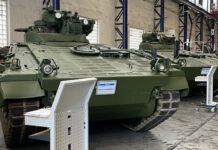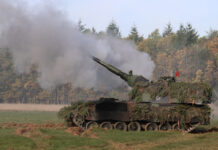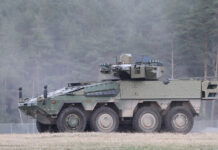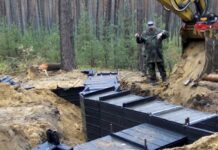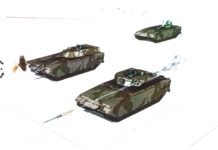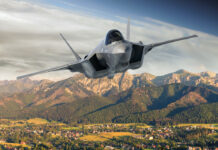ARTEC, the joint venture founded by Rheinmetall and Krauss-Maffei Wegmann for the development, construction and marketing of the BOXER, has handed over the last of the vehicles ordered so far by the Bundeswehr to the Federal Office of Bundeswehr Equipment, Information Technology and In-Service Support (BAAINBw), Rheinmetall has announced. The most recently delivered BOXERS are in design status A2, into which experience and modifications from the Afghanistan mission have been incorporated. Under an order from 2017, all BOXERS will be converted to the A2 version, a process to be completed by 2024. Between 2009 and 2021, the Bundeswehr received a total of 405 BOXERs in two lots.
The BOXER’s unique selling point is its separation into a driving module and a mission module. The Bundeswehr has received the BOXER with four different mission modules, all of which are made mobile through the same drive module. The most common variant is the infantry group vehicle with 256 examples while the others are the ambulance vehicle (72 units), command vehicle (65) and driving school vehicle (10).
For the BOXER, the production phase has just begun. After completing the delivery of 84 BOXERs to Lithuania and the production of 211 with six different mission modules for Australia has reached a significant milestone with the delivery of the first 25 vehicles. In the UK Mechanised Infantry Vehicle (MIV) programme, production of 528 BOXERs has started with initial welding. Together, with 200 BOXERs delivered to the Netherlands by 2018, this brings the order total to 1,428 from five nations.
BOXER Developments
The good experience gained from initial missions such as Afghanistan, and the modular concept with interchangeable mission modules, has led to numerous concepts for the realisation of new capabilities, both among those who require them and in industry. The Bundeswehr is currently developing a “Qualified Air Defence” module, primarily for the defence against UAVs, which should be available in time for the VJTF 2023. Budget funds have just been released by the Bundestag for the “Joint Fire Support Team, heavy” module with production scheduled to start in 2023. The “Heavy Weapon Carrier Infantry” with a 30mm cannon is in early stages of development and is to be built from around 2024. Another project is the “Protected Mobile Command and Control” for which the functional requirements have not yet been subsequently formulated.
Industry has produced numerous proposals for mission modules covering a wide range of capabilities from all support domains. These include weapon carriers with calibres up to 155 mm, bridge layers, radar carriers as well as vehicles for recovery andair defence, to name but a small selection. In total, experts count more than 20 available variants for the BOXER. As an international project from the outset, the BOXER is managed by the European procurement agency OCCAR on behalf of the participating nations (except Australia). OCCAR coordinates requirements, conducts negotiations with industry and concludes development and supply contracts with industry. Australia is not a member of OCCAR, but participates in the BOXER programme as an observer. For operations, the NATO Support and Procurement Agency has established a BOXER Support Group to assist in the procurement, stockpiling and distribution of spare parts.
Gerhard Heiming




